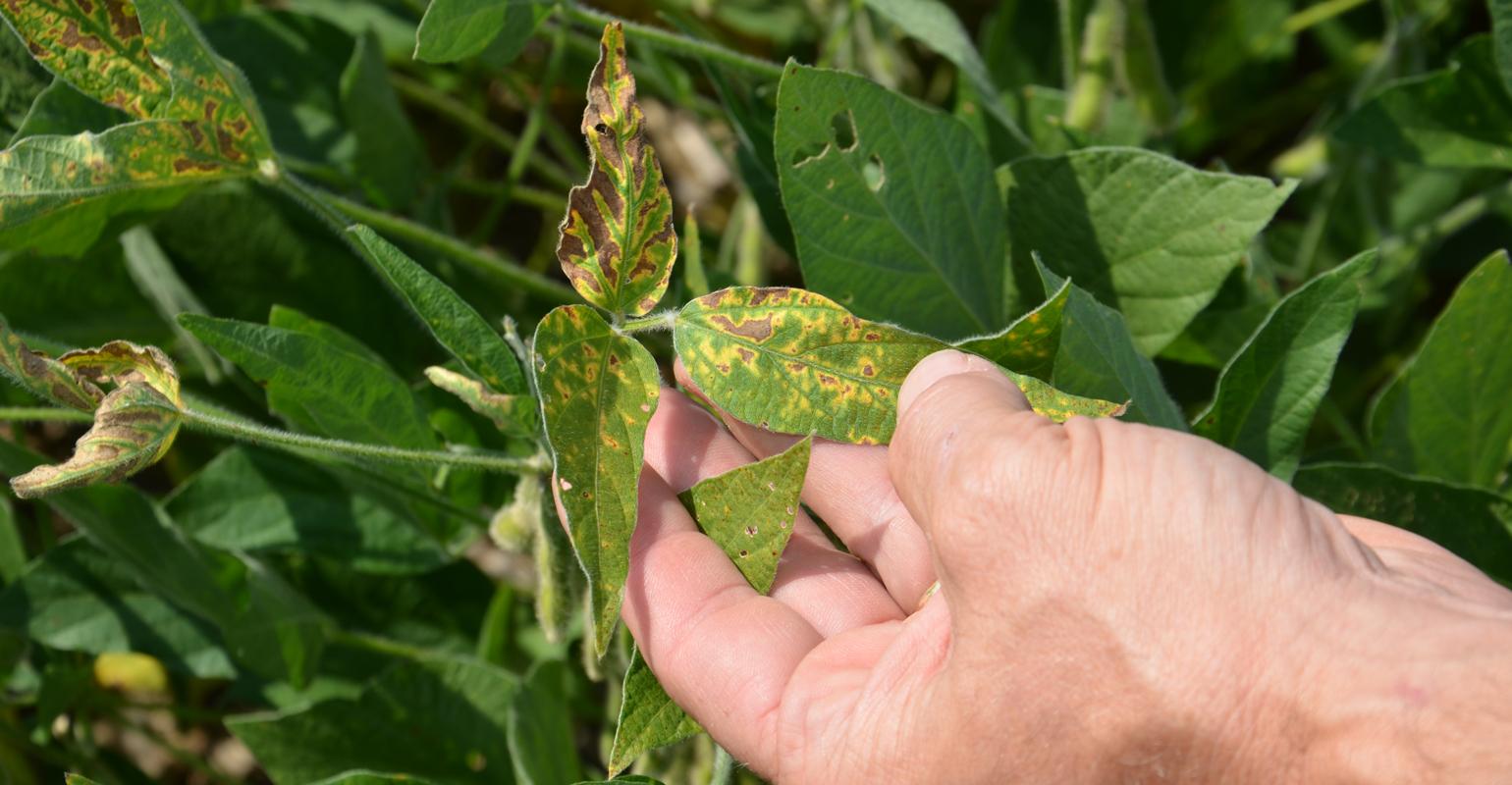Think through approach to SDS control

Soybean Pest Beat: Several options are available to combat sudden death syndrome.
Jan 30, 2020
Sudden death syndrome can be a real issue on our wetter soils. There are now two fungicides available, and one company is offering a third alternative. How do I know which option is best? Treatments are expensive. Should I just treat for SDS control on the wettest fields where we will plant soybeans?
The Indiana certified crop adviser panel answering this question includes Gene Flaningam, Flaningam Ag Consulting, Vincennes; Greg Kneubuhler, G&K Concepts Inc., Harlan; and Bryan Overstreet, Jasper County Extension ag educator.
Flaningam: Sudden death syndrome will most likely affect those early-planted fields that go through excessive rainfall periods. I would suggest you treat those early-planted fields for SDS. Try to figure out how much seed you will need for at least the first one-third of your total planted soybean acreage, and have it treated with seed-applied fungicide. Soil type and drainage will also influence your decision to add seed-treated fungicides. More than likely, those wet soils will not be planted early, so adjust according to the field conditions.
Kneubuhler: SDS is extremely variable and hard to predict in field conditions, so disease management is a major challenge for growers. SDS is an important soybean disease that causes root rot, defoliation and yield loss. This disease is caused by the soilborne fungus Fusarium viguliforme, which infects the roots and produces a toxin responsible for the foliar symptoms.
In my opinion, it’s very important to pay attention to your own fields to understand whether you have a history of SDS in those fields. That would be the major driving factor in my determination of purchasing the seed treatments. If SDS has a history on your farm or in specific wet fields, then I would buy it. The seed treatment data is actually very beneficial in the presence of SDS.
Overstreet: I could not find much on the third alternative, but from the data I could find, the fungicide fluopyram, marketed as Ilevo by BASF, has had the best effect in reducing SDS. I would also look at management of the crop. I would plant varieties that are tolerant to SDS and tolerant to soybean cyst nematode. No varieties are completely resistant to SDS. I would plant the fields that concern you the most last so the soils will be warmer at planting.
Editor’s note: The two fungicides for SDS control are Ilevo from BASF and Saltro from Syngenta. Beck’s opted to treat soybean seed for 2020 with a different combination of products that its research indicates is effective against SDS. The information presented here by sources does not constitute endorsement by Indiana Prairie Farmer for any or all products.

